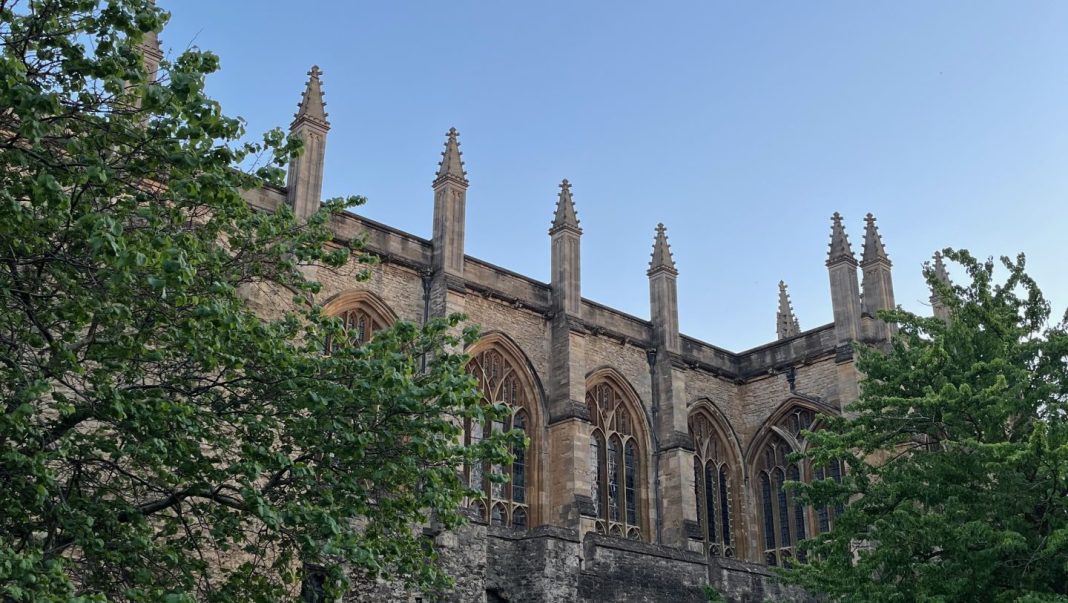News abounds of the imminent death of the Church of England. Unable to find a new Archbishop and tearing itself apart over same-sex marriage, the established Church can only muster 1% of the country to regular attendance and the fate of famous cathedral choirs is uncertain. Yet amongst this sea of secularisation, Oxbridge is a lonely island of resistance. The choral foundations continue to be some of the finest choirs in the world, singing every day; almost every college puts out at least a weekly Evensong. Attendance seems much stronger than in the average parish church – and certainly much younger: there can be few places with a higher density of churchgoers. Why is it that hubs of progressive student politics end up being the last bastions of this most quintessentially conservative tradition?
The most obvious reason is the aesthetic advantage that Oxbridge chapels have: the quality of the music and the architecture. Every day of the week in one college or another is a wide selection of some of the finest music written – from intricate Renaissance polyphony and classic Victoriana, to contemporary pieces commissioned by the colleges, and this all sung by excellent choirs; at the top, the choirs are world-renowned professional exercises funded by significant endowments. While this is primarily music written for liturgical purposes – to aid in worship, often setting Biblical words appropriate to the Christian calendar – there can be no doubt that its appeal extends beyond the devout, whether one treats services purely as an irreligious concert interspersed by some priestly waffling, or an aid to an undefined spirituality not necessarily tied to formal Christian dogma (hence why this is frowned upon by stern low church types). Similarly, the chapels that are the focus of Oxbridge religious life are architecturally appealing: the warm, wood-panelled intimacy of a Corpus or Pembroke, the radiant stained-glass splendour of Merton, the filigree intricacy of Magdalen or New feast the eyes as well as the ears.
But there is surely one other dimension which is important. After all, there are beautiful churches and good choirs outside of Oxbridge, with minimal attendance. There exists the community aspect of college chapels: rather than the city’s cathedral or the forbidding building at the end of the road, the chapel is ensconced within the college socially as well as physically: preached in by a chaplain you know (perhaps the college’s Head of Welfare), sung in by friends; a part of the college as much as the Hall or quad. This is an attractive quality for the religious and non-religious alike: but it is for those not from a conventionally practising Christian background that this welcoming atmosphere makes the most difference. To walk through the chapel doors feels less like a declaration of faith; it is less of a step, less of a risk, less of an intrusion to peep one’s head in and listen – and perhaps be entranced. For after all, who would not be entranced sitting in King’s College Chapel by candlelight as dulcet treble voices soar up, wafting, curling like incense to the strain of Howells’ Collegium Regale? At its best, the Oxbridge chapel can provide music and architectural splendour on a level with a cathedral, but social familiarity and intimacy on a level with a village church.
So will this vibrant tradition continue at Oxford and Cambridge? It could be that we are just a few decades behind the rest of the country, with nice choirs and spires mere glossy paper covering the cracks of a crumbling Christendom. Fewer and fewer people at Oxford come from a religious family, and fewer from a religious or educational background that promotes choral singing. But there is reason to be optimistic. Traditions die slowly at Oxford. New choral foundations have been set up (Merton in 2008, for example); colleges certainly take pride and dare I say competitiveness in their choral offerings. (One puts on a special Evensong before the college feast to impress guests from other colleges.) But above all what is attractive about Oxford chapels – the music, the architecture, the community – remains attractive regardless of declining religiosity. On the contrary, my own observations at Merton suggest that this has had the effect of drawing non-Christians into the church. It should not, in the end, be a great surprise that the offer of non-judgmental spirituality, safety and community is one which draws in the young. The yearning for this is a universal one, and we should be grateful it is so well catered for at Oxford.


